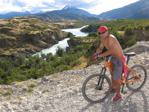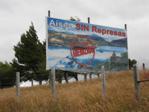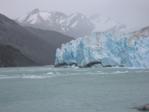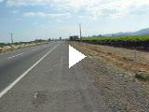Since last entry, I have zig zagged south, following the Andes to the tip of South America (see map). I am now in Punta Arenas, a city at the southern end of Chile.
The first segement of this journey, riding south from Coyhaique, Chile, involved riding Chile’s carretera austral, which was ordered built by the dictator Pinochet in the 1980s. The road is famous among cycle tourists, and I soon learned why. I camped every night, often next to giant turquoise lakes or rivers, or within sight of glaciated peaks and the nearby ice fields of Patagonia.
I met many cyclists on this route, almost all of whom were also on long journeys. It was a little strange to meet people who were crossing all of South America and think nothing of it – just give casual advice about the many months ahead.
I met Peter from the Netherlands, who left the Netherlands well over a year ago and biked across Asia. He realized he had some money left over, so he flew to Argentina and is now biking to Alaska. And that is nothing – If I had been on this road just two weeks earlier, I would have met the famous Heinz Stücke, who started bicycling 1962, and hasn’t stopped since. He was in South America because he was trying to get a boat to bike part of Antarctica, one of the very few places he has never biked. His boat fell through, so decided to bike the carretera austral, because last time he biked Chile, the road had not yet been built.


Along the carretera austral, I had a number of conversations with locals about the hydroelectric dams that will likely be built in the region. Most seem to support building the dams, as it would bring more infrastructure and development, while others complained that giant beautiful valleys would be flooded. These dams, though, would also provide incredible amounts of carbon dioxide-free electricity to Chile’s cities. No power source is without its drawbacks, and while I support dams over the use of coal, seeing such projects reminds me that energy efficiency–reducing our energy needs–is one of the most important investments we can make.

The carretera austral ends at lake O’higgins, which you can cross by boat. I paid a little extra to see the O’higgins glacier, which you can see on the left and which has melted 9 miles over the past century. Once we reached the far end of the lake, I had to take a trail through the woods (sometimes pushing the bike and getting rained on) to another lake, which, when crossed by a boat, brought me to the roads of Argentina and the mountains of Fitz Roy, shown below.
(A thanks to the people at Cerro Torre Caba̱as Рa great place to stay in El Chalten).
From these mountains, I headed south once more, crossing the dry steppe of Argentina before once more crossing over to Chile, where I stayed with families in Puerto Natales and Punto Arenas. In Punta Arenas, I visited my first school, Liceo Sara Braun, in many months, as the summer vacation for Argentina and Chile has just ended.
I am now at the end of South America. From here, I take a boat across the Straight of Magellan, and bike a few days across the island of Tierra del Fuego to the Argentine city of Ushuaia. And then there will be no more road left.






